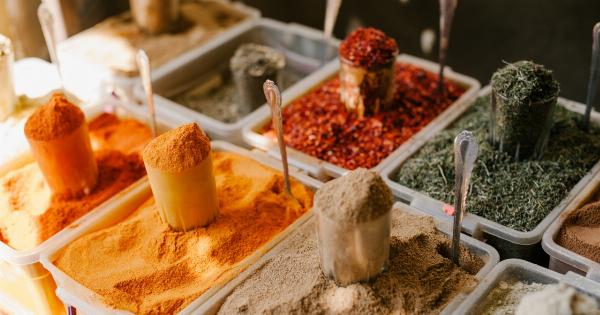When it comes to making pizza, the process involves more than just slapping some sauce and toppings on a dough. To ensure a hygienic pizza making experience, it is crucial to follow proper food safety practices and maintain a clean working environment.
In this ultimate guide, we will walk you through the step-by-step process of making a delicious and hygienic pizza.
1. Start with Clean Hands and Surfaces
Before you begin the pizza making process, ensure that your hands are thoroughly washed with warm water and soap for at least 20 seconds. It is also essential to sanitize your work surfaces and utensils to prevent the transmission of any bacteria.
2. Use Fresh and Quality Ingredients
The quality of your pizza largely depends on the freshness of the ingredients you use. Opt for fresh vegetables, quality meats, and flavorful cheeses.
Ensure that all perishable ingredients are stored properly and not past their expiration dates to prevent any foodborne illnesses.
3. Prepare the Dough
Homemade pizza dough is often a highlight of a delicious pizza. When preparing the dough, make sure to follow a reliable recipe and let the dough rise in a clean, covered bowl.
Keep the dough away from any potential contaminants and ensure that your hands are clean while handling it.
4. Properly Store and Handle Toppings
If you’re using pre-cut toppings, ensure that they are stored at the correct temperature before use. It is recommended to keep perishable toppings, such as meats and cheeses, in the refrigerator until you’re ready to use them.
Handle the toppings with clean utensils and avoid cross-contamination.
5. Maintain Proper Food Temperatures
During the process of making and baking the pizza, it is crucial to maintain proper food temperatures to prevent bacterial growth.
Keep perishable ingredients refrigerated until needed, and ensure that the pizza is baked at the appropriate temperature to cook it thoroughly.
6. Clean Your Oven Regularly
Your oven plays a crucial role in baking the perfect pizza. Regularly clean your oven to remove any food debris or residues that may contaminate the pizza during the baking process.
Follow the manufacturer’s instructions for cleaning your specific oven type.
7. Use Clean Utensils and Pizza Stones
Ensure that all utensils, such as pizza cutters and spatulas, are thoroughly cleaned and sanitized before use. If you are using a pizza stone, make sure it is clean and free from any build-up.
Regularly clean and season your pizza stone according to the manufacturer’s instructions.
8. Properly Store Leftover Pizza
If you have any leftover pizza, it is essential to store it properly to maintain its hygiene. Allow the pizza to cool down before placing it in an airtight container and refrigerating it.
Consume the leftovers within a few days to prevent any potential foodborne illnesses.
9. Maintain a Clean and Organized Kitchen
Keeping a clean and organized kitchen is vital for hygiene during the pizza making process. Regularly clean your countertops, utensils, and cutting boards with hot, soapy water.
Ensure that all equipment, such as pizza peels and baking sheets, are free from any food debris or residue.
10. Follow Local Health Department Guidelines
Lastly, be aware of and follow the guidelines set by your local health department. These guidelines are designed to ensure the safety and hygiene of food preparation processes.
Stay updated with any changes or recommendations made by the health department to maintain a hygienic pizza making environment.




























